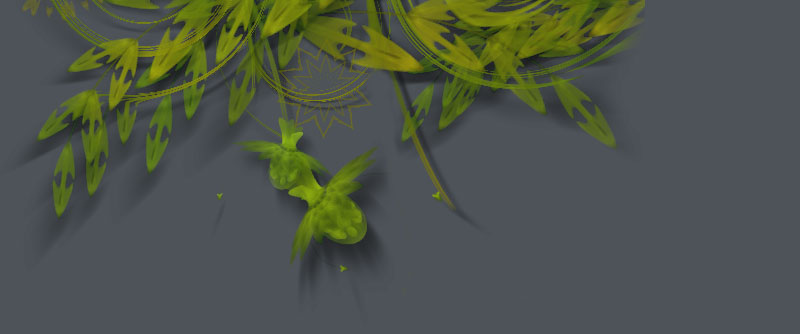Superfolia | source code

# Author: Tom De Smedt, 2006 zoom = 3 size(2012.6/zoom, 2863/zoom) bg = [ color(0.70, 0.70, 0.65), color(0.97, 0.97, 0.92) ] colors = [ color(0.57, 0.57, 0.44), color(0.29, 0.27, 0.08), color(0.16, 0.16, 0.05), color(0, 0, 0), color(0, 0, 0) ] colors.reverse() # Given a list of colors, # calculate intermediary steps. # The plants go from black to green, # giving them a nice sense of depth. def gradient(colors, i, n): l = len(colors)-1 a = int(1.0*i/n*l) a = min(a+0, l) b = min(a+1, l) base = 1.0 * n/l * a d = (i-base) / (n/l) r = colors[a].r*(1-d) + colors[b].r*d g = colors[a].g*(1-d) + colors[b].g*d b = colors[a].b*(1-d) + colors[b].b*d return color(r, g, b) # Radial gradient background. from math import sqrt n = 800/zoom r = sqrt(WIDTH*WIDTH + HEIGHT*HEIGHT) for i in range(n): dx = (WIDTH-r)/2 dy = (HEIGHT-r)/2 fill(gradient(bg, i, n)) oval(dx+i, dy+i, r-i*2, r-i*2) svg = ximport("svg") paths = svg.parse(open("plant.svg").read()) points = 100 # this will take a while to render. nofill() stroke(0) strokewidth(0.5) transform(CORNER) scale(4.5 / zoom) translate(-110, 35) # Quick preview of the SVG: #for path in paths: # if random() > 0.25: # drawpath(path) for path in paths: if path.length > 900: n = points * 2 d = 10 else: n = points d = 30 prev = None autoclosepath(False) nofill() for i, pt in zip(range(n), path.points(n)): clr = gradient(colors, i, n) clr.alpha = 0.7 + random(0.3) stroke(clr) strokewidth(random(0.04,0.2) * zoom) if prev != None: beginpath(prev.x, prev.y) curveto( pt.ctrl1.x - random(d), pt.ctrl1.y, pt.ctrl2.x, pt.ctrl2.y + random(d), pt.x, pt.y ) curveto( pt.ctrl1.x + random(d/3), pt.ctrl1.y, pt.ctrl2.x, pt.ctrl2.y - random(d/3), pt.x + random(-d*2/3, d*2/3), pt.y + random(-d/3, d/3) ) endpath() prev = pt


